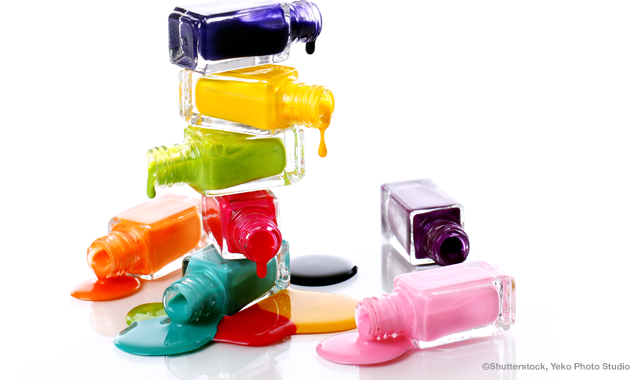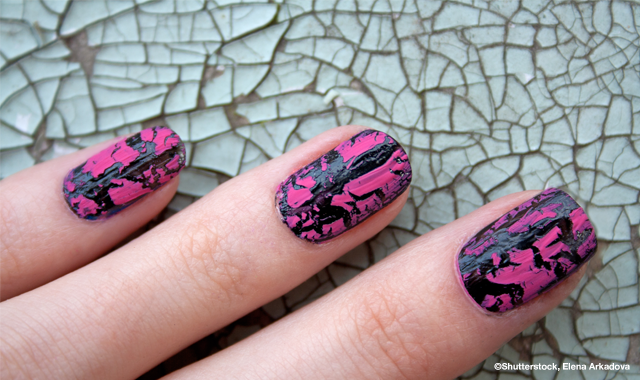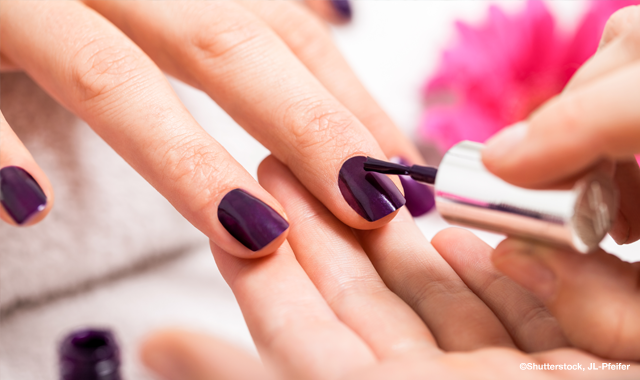- Acne
- Actinic Keratosis
- Aesthetics
- Alopecia
- Atopic Dermatitis
- Buy-and-Bill
- COVID-19
- Case-Based Roundtable
- Chronic Hand Eczema
- Chronic Spontaneous Urticaria
- Drug Watch
- Eczema
- General Dermatology
- Hidradenitis Suppurativa
- Melasma
- NP and PA
- Pediatric Dermatology
- Pigmentary Disorders
- Practice Management
- Precision Medicine and Biologics
- Prurigo Nodularis
- Psoriasis
- Psoriatic Arthritis
- Rare Disease
- Rosacea
- Skin Cancer
- Vitiligo
- Wound Care
Article
New nail adornments and your patient
There are many ways to accomplish creative fashionable nail appearances. learn what's trending and what you need to know about nail polish to educate your patients.


What is magnetic nail polish?

Zoe Diana Draelos, M.D.There are many ways to accomplish creative fashionable nail appearances. One of the currently popular nail polish techniques important to the dermatologist is magnetic nail polish. Magnetic nail polish is removed from the bottle and painted over the nail like traditional nail polish, except it contains magnetic particles, such as nickel, cobalt, iron, gadolinium, terbium, and erbium. The most commonly used metal is magnetite, also known as iron oxide. While iron oxide, the brown pigment used in facial cosmetics, is not a problem, the nickel containing nail polishes may cause allergic contact dermatitis in nickel allergic patients.
READ: Are the new nail shellacs safe?
The magnetic particles are asymmetric and oblong allowing them to create novel shapes and patterns when a magnet is placed over the wet nail polish. Many different magnet configurations can be used to create different appearances with the same nail polish. The magnets can be oriented in lines, circles, squares, etc, each creating a different appearance. The popularity of this nail polish with young females is the individualized customized appearance, allowing everyone to have unique appearing nails. The dermatologist should ask about magnetic nail polish in a patient who presents with periungual swelling and possibly eyelid dermatitis.
NEXT: How are crackle nails achieved?



How are crackle nails achieved?
Crackle nails are a way of combining two different nail polish colors to achieve one continuous color over the nail with a cracked topcoat of another color. The simple application technique has made this nail adornment the most popular new nail polish of the year. In order to create the appearance, a regular nail polish is applied over the nail plate and allowed to thoroughly dry. The second crackle coat is applied and then allowed to dry.
CHECK OUT: Are therapeutic moisturizers labeled OTC drugs better?
The crackle is created by the rapid uneven drying of the nail polish due to the addition of ethyl alcohol. If the crackle nail polish is thinner due to a high concentration of ethyl alcohol, the cracks will be thinner. If the crackle nail polish is thicker due to a high concentration of ethyl alcohol, the cracks will be thicker. Once the crackle coat dries, the nail polish application is completed by application of a clear topcoat to prevent chipping. Even though the crackle may be quite dramatic, the dermatologist should not be concerned that the underlying nail and nail bed has been damaged. The unusual crackle appearance resolves when the nail polish is removed.
NEXT: What is a "breathable" nail polish and why is it important?


What is a "breathable" nail polish and why is it important?
The use of nail polish has become popular with females worldwide, but there are different ethnic and religious needs that must be met by modern cosmetics. Traditional nail polish is not water and oxygen permeable because it places polymerized toluenesulfonamide resin over the nail plate using the same technology as automobile paint. (Nail polish was actually adapted from the automobile industry by Charles Revson, the founder of Revlon, who thought he could make money selling automobile paint to women for nail adornment. And, of course, you know the rest of the story) Muslim women who practice wudu-washing must cleanse every part of their body for prayer, including the nails.
INTERESTING: What ingredients do therapeutic moisturizers contain?
Thus, nail polish covers the nail plate and washing cannot occur. Adaptation of some of the newer contact lens materials to nail polish yields a polymer that is oxygen and water permeable meeting wudu requirements. These nail polishes now allow women of varied religious backgrounds to enjoy nail adornment.
Newsletter
Like what you’re reading? Subscribe to Dermatology Times for weekly updates on therapies, innovations, and real-world practice tips.











